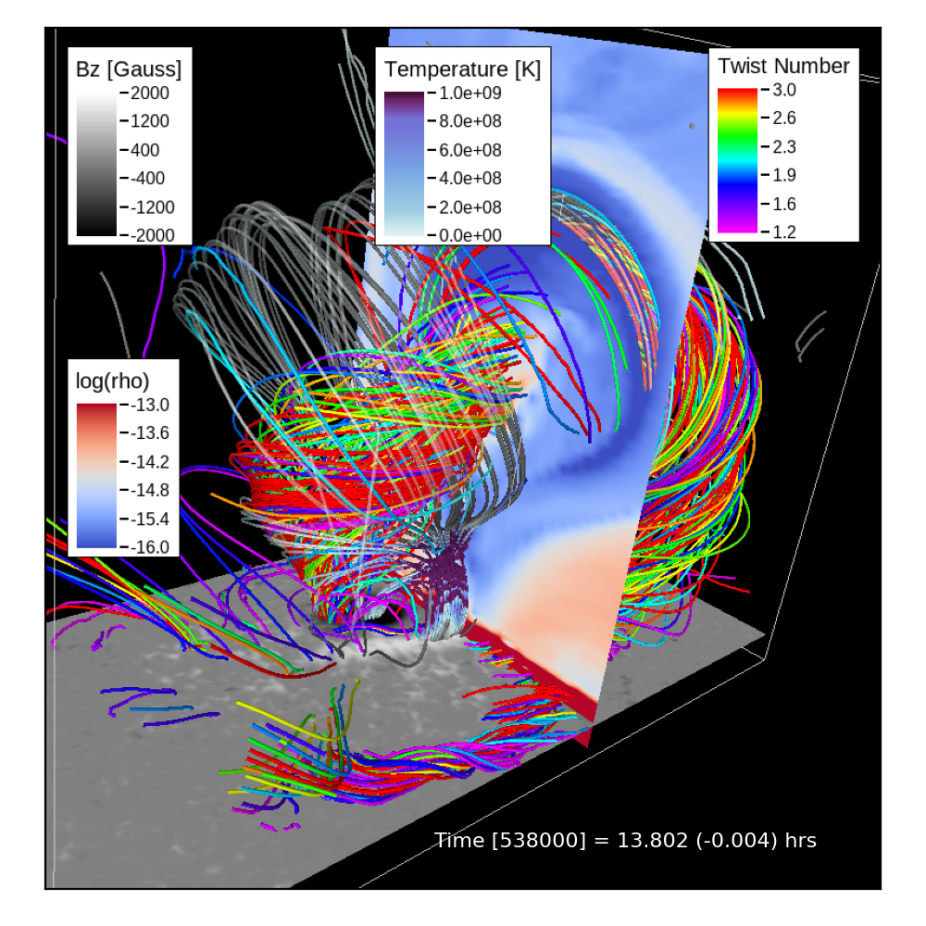ApJ: Matthias Rempel et al. present a new simulation setup using the MURaM radiative Magnetohydrodynamic (MHD) code that allows to study the formation of collisional polarity inversion lines (cPILs) in the photosphere and the coronal response including flares. In this scheme we start with a bipolar sunspot configuration and set the spots on collision course by imposing the appropriate velocity field at the footpoints in the subphotospheric boundary. We produce different setups with the same initial spot separation by varying physical parameters such as the collision speed and minimum collision distance. While all setups lead to the formation of an EUV and X-ray sigmoid structure, only the cases with a close passing of the spots cause flares and mass eruptions. The energy release is in the 1 − 2 × 10^31 ergs range, putting the simulated flares into the upper C-class to lower M-class range of GOES X- ray 1-8 ̊A flux. While the setup with the more distant passing of the spots does not lead to a flare, the corona is nonetheless substantially heated, suggesting non-eruptive energy release mechanisms. We focus our discussion on two particular setups that differ in spot coherence and resulting cPIL length persistence. We find different timings in the transition from a sheared magnetic arcade (SMA) to magnetic flux rope (MFR); the setup with a large length but shorter duration cPIL produces a MFR during the eruption, while the MFR is pre-existing in the setup with a large length and longer duration cPIL. While both result in flares of comparable strength and the eruption of a CME, the setup with pre-existing MFR (and embedded filament) leads to an MFR eruption with a larger mass content. Was published in October 2023.

Erupting magnetic flux rope. Field lines are color-coded by twist number. In addition we show a second set of field lines which are selected based on their connectivity to the reconnection region, these field lines are color-coded by temperature. We find tether-cutting reconnection underneath the ejected flux-rope. We show a cross-section through the erupting flux-ropes that display the mass density.